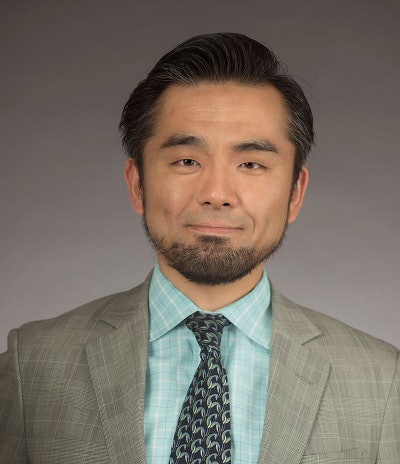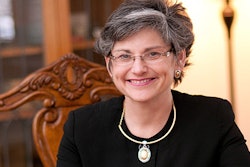Graduate school applications and first-time enrollment are on the rise with the largest increases in mathematics and computer sciences.
 Dr. Hironao Okahana
Dr. Hironao OkahanaThe Council of Graduate Schools (CGS) released its annual report on graduate enrollment and degrees. CGS/GRE Graduate Enrollment & Degrees: 2008–18 shows overall graduate school applications from fall 2017 to fall 2018 increased by 2.2 percent and first-time graduate school enrollment increased by 2.1 percent across all institution types.
The report examines master’s and doctoral programs across all fields of study and includes responses from 589 of the 775 institutions contacted (76 percent).
Between fall 2017 and fall 2018 total graduate school enrollment increased by 1.5 percent. A larger number of students were enrolled in private, not-for-profit institutions versus public institutions.
The fastest-growing fields in graduate education stood out. Between fall 2008 and fall 2018, first-time enrollment in mathematics and computer sciences increased 11 percent. The health sciences increased by 6 percent. These fields also showed substantial gains between fall 2017 and fall 2018 with first-time enrollment in mathematics and computer sciences increasing by 4.3 percent and health sciences by 3.3 percent. Business and education were also among the broad fields with the largest percentage of enrollment.
Conversely, applications and first-time graduate enrollment in engineering declined between fall 2017 and fall 2018. The one-year decrease in first-time graduate enrollment in engineering was 4.6 percent. A contributor to this decline is being attributed to the decrease in international students who onced comprised 51.2 percent of first-time graduate students in engineering. Researchers noted an overall 1.3 percent decrease in graduate enrollment by international students between fall 2017 and fall 2018.
In the fall of 2018, 59.7 percent of first-time graduate students at both the master’s degree and certificate level were women. At the doctoral level the percentage was 54.4 percent. Women earned 64.8 percent of graduate certificates, 58.3 percent of master’s degrees and 53 percent of doctoral degrees.
Despite holding an overall majority, women were still underrepresented in business, engineering, mathematics and computer sciences, and physical and earth sciences, but the numbers are growing.
“We don’t have data for graduate applications by gender, but we do know from looking at our first-time graduate enrollment data the increases of women enrolled in the STEM fields, particularly math and computer sciences,” said Dr. Hironao Okahana, one of the authors of the report. “A very robust increase. Increases that are at a greater rate of growth than their male counterparts.
For example, between 2017 and 2018, researchers saw a 7.3 percent increase in the first-time enrollment of women in math and the computer sciences, he added. “Our baseline number for women is still small and they’re underrepresented, but we do see some encouraging signs in our data that the number of women enrolled in these programs is growing.”
In the broader picture of all fields, as of fall 2018 women of color show greater rates growth than men of color in first-time graduate school enrollment. Latinx males show 3.3 percent growth and Latinx women show 4.1 growth from fall 2017 to fall 2018. Among African-American first-time graduate school enrollment, men show a 3.7 percent increase and women show 8.5 percent increase.
There is not a statistic for distance learning or online enrollment; however education, business and the health sciences had the largest percentage of part-time students.
“Looking at the broader trend, our sense is that the growth in particular areas, say math and computer sciences and health sciences that we’re seeing in our report, aligns with the increased workforce demand for advanced degree holders,” said Okahana. “Our take is that this growth in graduate enrollment is reflective of how master’s and doctoral programs align and meet the demand for today’s labor market.”
Okahana said the decline in international students is not linked to any single policy or rule, but policy changes are being closely monitored along with other factors that may influence the flow of international graduate students.
Despite increases in first-time enrollment, minority students remain underrepresented, particularly in STEM fields. Okahana said this report provides benchmarks and strategic insights going forward.
 Dr. Edmund Adjapong
Dr. Edmund Adjapong“Overall, we are very optimistic and have seen robust growth in first-time graduate enrollment of traditionally underserved students of color,” said Okahana. “As far as the sustained underrepresentation, particularly in STEM fields, it’s a continuous reminder to us. We have collectively as the graduate education community made strong headway in this area, but there’s still work to be done.”
Dr. Edmund Adjapong, an assistant professor of educational studies at Seton Hall University and a faculty fellow at the Institute for Urban and Multicultural Education at Teachers College, said that examining data is crucial in informing efforts to increase diversity in STEM fields.
“We have to create more culturally relevant STEM opportunities in K-12 and opportunities that allow young people of color to see themselves as part of the content,” said Adjapong, who explained that the journey to graduate studies in STEM begins early.
He said that the mindsets of educators around science often is to utilize weed-out courses to eliminate those who cannot handle the rigors of STEM. Adjapong noted that those courses can push students of color away from STEM even if they are able to handle the content.
“Data is very important in this battle,” said Adjapong. “For experts like myself who are in the field and work in urban communities and focus on youth of color to increase achievement in STEM, the data gives us numbers to things we already see. It helps make the argument for why we need to be innovative in our thinking and approaches to increasing urban youth and youth of color’s interest in STEM and away from traditional practices.”



















